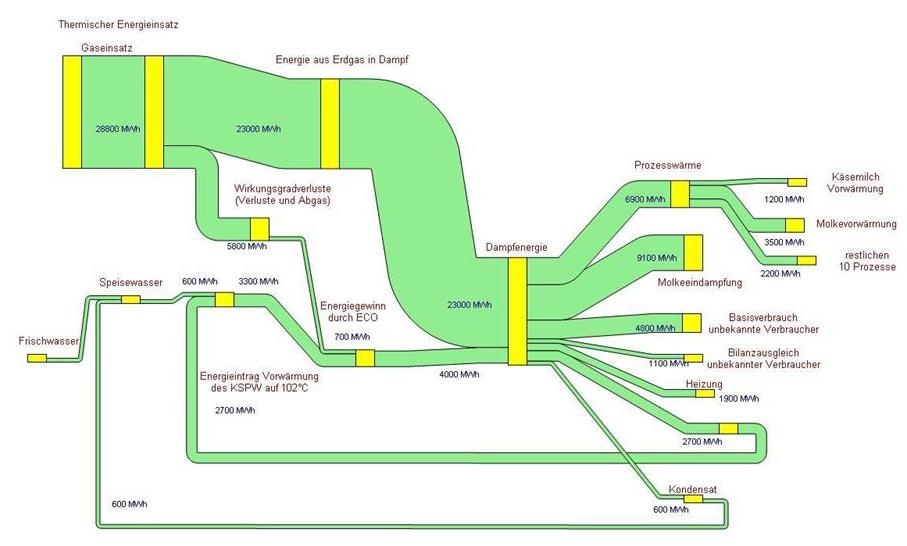Another way to look at energy flows! Here is a Sankey diagram of US feed-to-food caloric flux. This is from a paper by Shepon et.al. titled ‘Energy and protein feed-to-food conversion efficiencies in the US and potential food security gains from dietary changes’ published October 2016 in Environmental Research Letters (Environ. Res. Lett. 11 (2016) 105002 – doi:10.1088/1748-9326/11/10/105002) under Creative Commons CC 3.0
Flows are in Pcal (Peta calories, 1012 kcal). Production figures are based on data from U.S. National Research Council and a “Mean American Diet” (MAD) with an average consumption of 2500 kcal per day is used. We can see energy in three feed classes being transformed into energy in edible animal products. The authors explain:
“On the right, parenthetical percentages are the food-out/feed-in caloric conversion efficiencies of individual livestock categories. (…) Overall, 1187 Pcal of feed are converted into 83 Pcal edible animal products, reflecting a weighted mean conversion efficiency of approximately 7%.”
In light of this, energy conversion efficiencies of 30-40% seem to be fantastic…
Check out the article for another Sankey diagram of protein flux.
